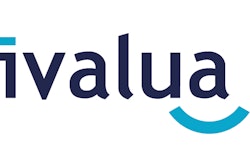
For decades, manufacturers' sourcing troubles stemmed from their dependency on tedious manual models. Though many organizations moved away from this antiquated approach, problems persist.
The rise of source-to-contract and procure-to-pay technology offered businesses a new level of automation and efficiency, but created a wedge between sourcing and procurement functions. In the place of multiple manual processes, now there were two mini-suites, each amped up, but still out of sync with each other.
Behind any effective procurement office is a smart e-sourcing solution. Without a certain level of platform flexibility and integration, organizations struggle to find certain goods and services—stunting growth and risking production delays. To combat these emerging obstacles, whether you're sourcing a new part for the first time or renewing an old order, manufacturers need source-to-pay solutions that offer accuracy, compliance controls and efficiency.
Pry Before You Buy: Three Questions for Selecting the Right Sourcing Solution
Before investing time, money and training efforts into a completely new system, procurement executives need to turn an honest, critical eye on their existing arrangement. Here are a few questions to reflect on when assessing your current sourcing and procurement software, and its potential replacement.
- Can you access accurate data around both sourcing and procurement?
Sourcing and procurement are interdependent operations. Relegating each to its own software program creates gaps in your data, leaving manufacturers with an incomplete picture of spend and supplier information. The right platform should house data from both sides of the equation, whether it's contracted rates and category spend history or suppliers' compliance status.
When sourcing certain goods or services for the first time, or from a new supplier, buyer vigilance is key. With data spread across disparate programs, your procurement managers may fail to catch a supplier with an outdated compliance certificate or note a particular good's niche compliance requirements. The more companies tap into global supplier networks to reduce production costs and timelines, the more caution they must exert. Access to quality, updated data—from suppliers' delivery track records to invoice reliability—is the foundation of any strategic sourcing program.
- Can you create controls against costly, off-contract spending?
Research shows that the average business never sees 30 to 40 cents of each dollar of its previously negotiated savings. One of the primary culprits in these all-too-common situations is maverick spending. Identifying and mitigating rogue purchases, however, is nearly impossible when sourcing and procurement aren’t integrated.
An adept system should eliminate (or at least dramatically narrow) your margin of maverick error. Procurement executives can typically configure source-to-pay platforms to automatically verify if a requested good or service is covered under an existing contract, or raise a red flag if it isn't.
- Can you tap into the information needed to source new products efficiently?
Any ounce of automation offered by sourcing or procurement software is an opportunity to improve staff productivity and process efficiency, right? Wrong—unless up-to-date data is involved. Plenty of existing sourcing programs automatically populate new orders or events with pricing information from your last transaction with a supplier. Depending on when that transaction happened – be it weeks, months or years ago—the data could be irrelevant. If a platform automates data entry with garbage inputs, you're going to reap garbage results.
The automation ideal is a system that pulls a supplier's pricing information from the last invoice it sent for a product or service—even if it's something the buyer never sourced before. Immediate access to current data slashes the time it takes procurement staff to process sourcing events, letting them set up more events and identify more potential savings.
For manufacturers, letting go of manual sourcing and procurement operations is progress, but it's only a baby step in the right direction. Ensuring scalable production and reliable supply chains begins with a sophisticated foundation.
Updated data, consistent records and a clear view into supplier networks are no longer luxuries for manufacturers; they're standards. Rather than wrestle with segregated sourcing and procurement technologies—which works against these demands—organizations must consider a unified approach. There are plenty of forces beyond manufacturers' control that plague their supply chains and sourcing initiatives; today, technology should never be one of them.
Paul Noël, the senior vice president of procurement solutions at Ivalua, helps prospects, partners and clients architect solutions on the Ivalua platform. His entire career is about improving corporate profitability through efficient operations and management of spend. From his work at Ariba, Softface, and Blackhog, Paul’s specialty is to harness standard software and services to create specific solutions for companies large and small, local and international.

















